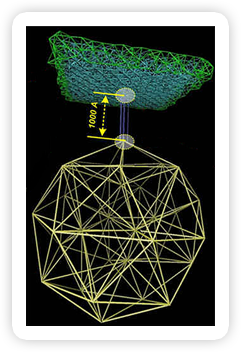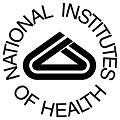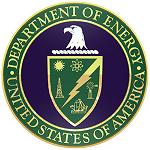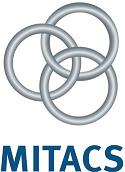
|
|
Image courtesy of Dr. Danny Bluestein, SUNY Stony Brook
|
Interagency Modeling and Analysis Group (IMAG)
In April 2003, the Interagency Modeling and Analysis Group (IMAG) was formed; starting
from a working group comprised of program staff from nine Institutes of the National
Institutes of Health (NIH) and three directorates of the National Science Foundation
(NSF). IMAG now represents over 50 program staff from 10 government agencies in
the United States and Canada.
Since its creation, this group has convened monthly through virtual meetings and
at various locations of the IMAG participants. All IMAG participants are involved
in managing research programs in biomedical, biological and behavioral systems that
require the development of new and novel modeling and analysis methods.
The purpose of IMAG is to provide an open forum for communication
among government representatives to share updates on individual programs from the
various IMAG agencies, and to plan trans-agency activities that will have a broad
impact on the communities served by IMAG.
Government program officers interested in joining IMAG should contact
Dr. Grace Peng.
In 2003, IMAG recognized that the modeling community was on the forefront of thinking
across the biological continuum, rather than just focusing at one scale or level
of resolution. In addition, IMAG identified a strong desire among modelers to form
multi-disciplinary partnerships across varied research communities. This led to
the development in 2004 of the Interagency Opportunities in Multiscale Modeling
in Biomedical, Biological, and Behavioral Systems Solicitation. The 24 awardees
from this solicitation subsequently formed the MultiScale Modeling (MSM) Consortium
in 2006. The MSM Consortium has now grown to include over 75 projects relevant to
multiscale modeling.
Since 2006, the MSM Consortium has met annually as well as during the year on-line
and through virtual meetings. The MSM Consortium provides opportunities to:
- network with other MSM investigators, MSM participants, and projects;
- easily converse with program officers from ten government agencies and IMAG participants
from the U.S. and Canada;
- participate in focused Working Group discussions on the wiki;
- participate in virtual scientific presentations by all Working Groups throughout
the year;
- participate in annual meetings of the MSM Consortium and IMAG/MSM events;
- learn about the latest modeling and MSM-related activities from around the world;
and
- access various resources for modeling.
All activities of the MSM Consortium are live on the
IMAG wiki. Researchers interested in joining the MSM Consortium should visit:
MSM Consortium FAQs.
All researchers are welcome to join individual MSM Consortium Working Groups by
contacting the Working Group Leads listed at:
Multiscale Modeling Working Groups.
IMAG Agencies
 National
Institutes of Health (NIH)
National
Institutes of Health (NIH)
http://www.nih.gov (Funding Opportunities)
(Funding Opportunities)
- Center for Scientific Review
- National Cancer Institute
- National Center for Research Resources
- National Heart, Lung and Blood Institute
- National Human Genome Research Institute
- National Institute on Aging
- National Institute of Allergy and Infectious Diseases
- National Institute of Arthritis and Musculoskeletal and Skin Diseases
- National Institute of Biomedical Imaging and Bioengineering
- National Institute of Child Health and Human Development
- National Institute on Deafness and Other Communication Disorders
- National Institute on Drug Abuse
- National Institute of Environmental Health Sciences
- National Institute of General Medical Sciences
- National Institute of Mental Health
- National Institute of Neurological Disorders and Stroke
- National Library of Medicine
 National
Science Foundation (NSF)
National
Science Foundation (NSF)
http://www.nsf.gov/ (Funding Opportunities)
(Funding Opportunities)
- Directorate for Biological Sciences
- Directorate for Computer and Information Science and Engineering
- Directorate for Engineering
- Directorate for Mathematical & Physical Sciences
 National
Aeronautics and Space Administration (NASA)
National
Aeronautics and Space Administration (NASA)
http://www.nasa.gov/ (Funding
Opportunities)
(Funding
Opportunities)
 Department
of Energy (DOE)
Department
of Energy (DOE)
http://www.energy.gov/ (Funding Opportunities)
(Funding Opportunities)
- Office of Advanced Scientific Computing Research
- Office of Biological and Environmental Research
 Department
of Defense (DOD)
Department
of Defense (DOD)
http://www.defense.gov/ (Funding Opportunities)
(Funding Opportunities)
- U.S. Air Force Office of Scientific Research (AFOSR)
- U.S. Army
- Defense Advanced Research Projects Agency
- Office of Naval Research
- Telemedicine and Advanced Technology Research Center
 United States Department of Agriculture (USDA)
United States Department of Agriculture (USDA)
http://www.usda.gov/ (Funding
Opportunities)
(Funding
Opportunities)
 United States Department of Veteran Affairs (USDVA)
United States Department of Veteran Affairs (USDVA)
http://www.va.gov/ (Funding
Opportunities)
(Funding
Opportunities)
 United
States Food and Drug Administration
United
States Food and Drug Administration
http://www.fda.gov/ (Funding Opportunities)
(Funding Opportunities)
 Mathematics of Information Technology and Complex Systems (Canada)
Mathematics of Information Technology and Complex Systems (Canada)
http://www.mitacs.ca/ (Funding
Opportunities)
(Funding
Opportunities)
For more information, contact:
Grace C.Y. Peng, PhD
IMAG Chair
6707 Democracy Blvd, Suite 200
Bethesda, MD 20892
301-451-4778 (Phone)
301-480-1614 (Fax)
Back to Top
Last Updated On 09/19/2012